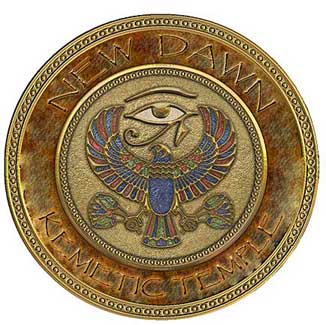|
|
|


Just across the modern road from the temple of Amenhotep III lies the small temple built by Ramesses IV. It is situated just behind the Office of the Antiquities Inspector. Unfortunately, there is almost nothing left of this small temple.
Probably, one of the better of the smaller temples in the area is that of a non-royal high court official who lived during the time of Amenhotep III. He was also named Amenhotep (or Amenophis, Greek), and he was responsible for the construction of his king's great mortuary temple as well as other building projects including Soleb in Lower Nubia.
Being granted the honor of his own mortuary temple undoubtedly reflects the great status he had before Amenhotep III. Few were granted such favors. His mortuary temple lies just behind and a little to the west of his king's mortuary temple.
While Amenophis' mortuary temple may be tiny compared to that of Amenhotep III's it was well designed with splendid construction. It is the largest of the West Bank's private temples, and is just as large as, for example, the temple of Tuthmosis III at Gurna. In fact, it was much larger then the nearby temple of Tuthmosis II.
This temple's facade consisted of large pylons through which one accessed a large, tree lined court basin surrounded by a pillared portico. at the rear of the court was a second set of pylons that communicated with the inner areas of the temple. This section of the temple consisted of a columned court with many small chambers, laid out in with almost perfect symmetry.
The cult of this official was considerable, outlasting many royal cults. A degree in the 21st Dynasty relating to this temple indicates that his cult was still flourishing after some 300 years. In fact, he was not only worshipped in this temple, but also had chapels in the Temple of Hatshepsut at Deir el-Bahri, and in the Ptolemaic (Greek) temple of Hathor at Deir el-Medina. Apparently, he was officially deified during the Ptolemaic era, so his cult may have lasted for a very long time indeed.
Regardless of this temple's prominence in the area, unfortunately like most of the other temples in this area, only scant remains survive.
Mostly ruined and miniscule beside the much larger Temple of the commoner, Amenophis son of Hapu, Tuthmosis II's temple measures only a couple of dozen meters in length. It was called "Shespet-ankh", or Chapel of Life. The temple was completed by Tuthmosis III, Tuthmosis II's son.
Ay and Horemheb sometimes seem to have acted as sort of a scheming pair at the end of the 18th Dynasty after the rule of the young Tutankhamun. Ay ruled first, taking not only Tutankhamun's throne, but also his wife for legitimacy, and he was followed to the throne by Horemheb. As befits the pair, Ay built his mortuary temple at the southern end of the line of royal cult temples that fronted the west Theban hills, but soon after his death, Horemheb took it over. Actually, Ay built the inner part of the temple, and Horemheb the outer. When finished, Horemheb had Ay's name erased from the inner section, thereby usurping the whole of the temple as his own.
The temple has three pylons, each leading into courts, with a palace located in the third court. There was a large, peristyle court, and a series of pillared halls and chambers before reaching the sanctuary. The structure lies on sloping ground that rises at the rear, and the temple core was built of sandstone while the surrounding or outer areas were made of mudbrick. Most of the structure is symmetrical, with the exception of the palace in the third court and a series of storage annexes to the left (southwest) of the inner temple section.
The builder of this temple, referred to as the Northern Temple relative to Nag Kom Lolah, is unknown, though it was partly built on the same site as a Ramesses IV temple. It is small, and destroyed, but the structure contained all of the architectural elements of a the classic local temples. It had a tripartite sanctuary, and otherwise was very similar to a structure just to the south.
The southern temple at Nag Kom Lolah is a few meters to the south of Tuthmosis II's temple, and is very similar to the "North Temple". However, here, the sanctuary chambers are aligned laterally. While the floor plan of this small temple is known, nothing much remains of the structure today.